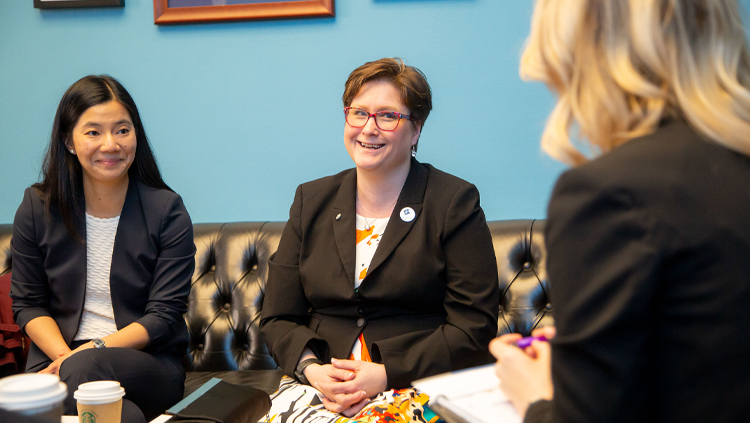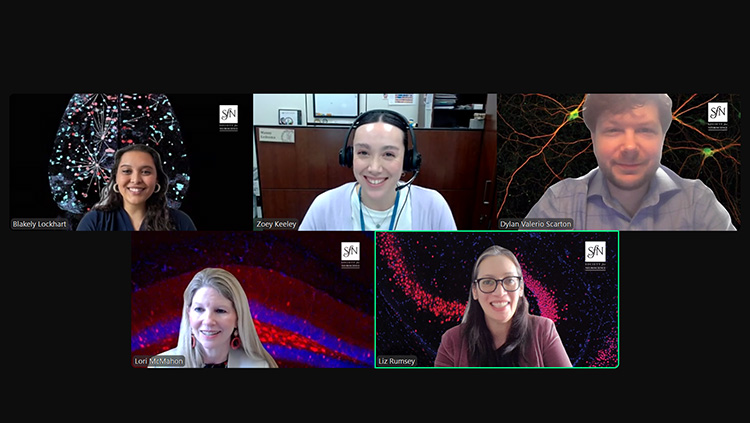
The following case study is adapted from a Theme J abstract presented at Neuroscience 2016. Theme J abstracts cover topics related to history, teaching, public awareness, and societal impacts in neuroscience, allowing departments and organizations to showcase the work they have done in these areas.
How can researchers advocate effectively, especially at the local level?
Over the course of my neuroscience career, I’ve been engaged in various forms of outreach and advocacy. As my experiences have evolved, I’ve been able to learn valuable lessons that have answered this question about how to make an impact.
As a graduate student at Washington University, I volunteered with the Young Scientist Program and had the opportunity to share my passion for neuroscience with K-12 students. Through conversations with parents and teachers at events, I realized that it was also important for adults to be better informed about science. That’s why I became a founding member of the group called Promoting Science Policy, Education, and Research (ProSPER).
As a postdoc at Vanderbilt University, I wrote an article on science policy careers for the Vanderbilt Postdoctoral Newsletter, Postdoc Talk, and learned from interviewing current science policy fellows how important it was to get involved in activities outside of the lab.
Then I participated in SfN’s Capitol Hill Day as an Early Career Policy Ambassador. After that experience, I returned to my home district in Dallas eager to share the importance of scientific research with a broad audience.
Ever since then, I’ve made it a point to continue advocating to different audiences. Here are some of my activities, approaches, and takeaways.
Outreach to Educators
I participated as a guest lecturer in The Kosmos Energy STEM Teacher Institute through the Perot Museum of Nature and Science, giving four remote lectures to more than 50 Dallas-area K-12 teachers.
I highlighted their critical role as educators of the next generation of scientists by sharing how teachers and mentors influenced my career. I also tried to inspire an interest in scientific research by explaining my current projects in terms they could understand.
To prepare, I reviewed my talk with family and friends who aren’t scientists and modified it each time based on their feedback. I also took questions each time I practiced to help gauge how well I communicated my science and what I needed to explain differently.
Advocating to Local Officials and the Public
I drew on the invaluable experience I gained from attending SfN’s Capitol Hill Day when I became an advocacy ambassador and congressional team member for the Alzheimer’s Association. As part of this team, I’ve advocated for science by:
- Asking our representative for his support of Alzheimer Association-supported initiatives, especially the Palliative Care and Hospice Education and Training Act (PCHETA).
- Organizing, publicizing, and executing a public forum where Vanderbilt’s Alzheimer’s disease (AD) researchers discussed their breakthrough AD research.
- Writing an op-ed to The Tennessean advocating for the public and our representatives to support PCHETA. The Tennessean outlines instructions for submitting an op-ed, and I am sure that other newspapers in your area have similar avenues for submitting opinion articles.
- Traveling to Washington, DC to encourage elected officials to support Alzheimer’s disease initiatives during the Alzheimer’s Association Advocacy Forum.
My Takeaways
Based on these experiences, here is what I’ve gathered goes into effective outreach and advocacy:
- Scientists need to have a quick elevator pitch about their research to effectively convey its significance.
- It is easier and more effective to use existing institutions and programs as a platform to reach a broad audience.
- Scientists should form coalitions as appropriate to advocate for a general increase in science funding instead of advocating as special interests for specific initiatives.








